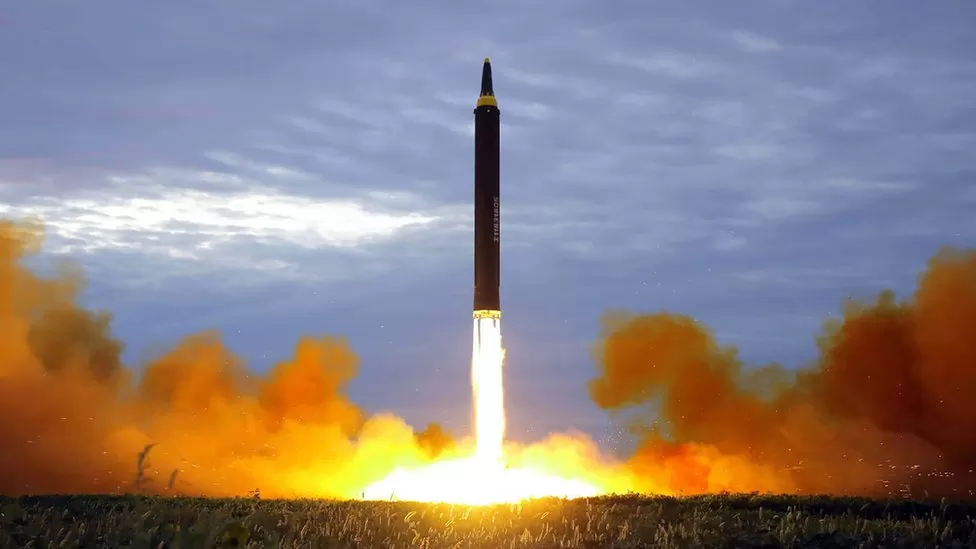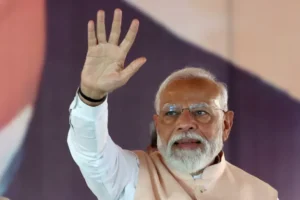India’s role in the QUAD alliance and its strategic positioning in the Indo-Pacific region signify a pivotal shift in global power dynamics. It is a precursor of global strategic concerns rather than a balancing of regional power dynamics. This evolution is not merely regional but resonates in the broader context of great power contention, with India being taken as a net-security provider, particularly to counter China’s influence, in alignment with US and allied interests. However, this role when juxtaposed against India’s expanding nuclear capabilities, introduces a significant element of strategic ambiguity at the global stage.
The genesis of India’s nuclear program dates back to 1948 when, under the chairmanship of Homi Bhabha, the Atomic Energy Commission was established. Originally conceptualized without a direct threat from China, this program has transformed India from a regional player to a potential global power. The Stockholm International Peace Research Institute (SIPRI) reports indicate a significant growth in India’s nuclear arsenal. This escalation, particularly in the context of advanced ICBMs, SLBMs, and hypersonic missiles, casts a shadow over the global strategic landscape.
The nuclear trajectory, marked by both capability and ambition, raises critical questions about the Indian role in the global security architecture.
India’s Nuclear Leap: Shifting Global Dynamics
India’s burgeoning nuclear arsenal, epitomized by the sophisticated Agni series and a formidable submarine-launched missile capability, presents a stark recalibration of regional and global power dynamics. The Agni-V and the forthcoming Agni-VI and Surya missiles, with their expansive intercontinental range, have propelled India into a league of global nuclear powers, capable of targeting far beyond its immediate geographic confines. This shift, transcending India’s emerging role as a self-proclaimed regional security provider, might be a reason for strategic instability.
The strategic implications of India’s foray into space weapons technology, particularly with the successful testing of the PDV-MKII ASAT missile, further amplify such concerns. India’s ability to target satellites, coupled with the development of hypersonic cruise missiles like the BrahMos-II, heralds a new era of strategic capabilities that could circumvent existing missile defenses. Such advancements not only challenge the existing strategic balance but also raise the specter of a new arms race, undermining decades of arms control efforts.
The extension of India’s nuclear reach, particularly through its development of ICBMs, poses unprecedented challenges to global stability. This expansion of capabilities, underscored by a lack of transparency in India’s defence spending and nuclear strategy, fosters an environment of strategic ambiguity. The potential global implications of this strategic shift are profound, raising pivotal questions about the risks to humanity and the ecological balance, in an era of risks perpetrated by climate change.
India’s Stealthy Nuclear Buildup
India’s thriving warhead production capacity, a critical facet of its nuclear program, raises substantial concerns. The International Panel on Fissile Material (IPFM) estimates India’s warhead count at 150, a figure that belies the substantial stockpiles of weapons-grade Plutonium (WGP) and highly enriched Uranium (HEU) at its disposal.
With approximately 700 kilograms of WGP, India possesses enough material for a substantial number of nuclear warheads, far exceeding its regional defense needs.
The complexities of India’s fissile material stockpile, including both WGP and a large reserve of reactor-grade plutonium, add layers of concern. The potential use of this material for boosting fission weapons or developing thermonuclear weapons cannot be overlooked. The Challakere Nuclear City Project, shrouded in secrecy and managed by agencies, is a case in point. Its estimated capacity for producing significant quantities of HEU, comparable to Iran’s Natanz Facility, suggests a trajectory towards an expanded nuclear arsenal.

Historical Lens and Conduct Conundrum
Historically, India’s nuclear proliferation activities, such as the diversion of material for the 1974 nuclear test, have set precedents that continue to influence current security deliberations. Recent incidents in 2021 involving the illicit possession of radioactive substances further underscore the risks associated with India’s nuclear program. Instances of technology transfer to nations like Iraq and Iran in the early 2000s resulted in U.S. sanctions on Indian entities, raising concerns about India’s commitment to preventing the spread of WMD-related technologies. These events reflect severe lapses in India’s regulatory mechanisms and raise doubts about India’s ability to safeguard its fissile material stockpiles and nuclear facilities.
In parallel, India’s nuclear conduct is characterized by a prestige-driven approach, with recent statements of Indian leaders casting a shadow of doubt on its commitment to a “no first use” (NFU) policy. This inconsistency and wavering commitment to NFU are alarming, as they exhibit a willingness to consider pre-emptive nuclear strikes, contrary to responsible nuclear behavior. As India’s nuclear program evolves, including the development of its Cold Start Doctrine and the rise of Hindutva ideology, there is a growing concern in the international community. India’s actions and statements suggest a likely departure from its stated NFU policy.
Modi’s Nuclear Agenda
Under the Modi regime, India’s nuclear assertiveness has exacerbated regional tensions. Indian Government’s hyper-nationalist foreign policy, border disputes with China, and brutal actions in Jammu and Kashmir have fueled instability. Its growing nuclear arcade, coupled with its evolving nuclear posture, causes regional anxieties. The Modi government’s ambiguity regarding NFU and instances of nuclear signaling have added to these concerns.
Managing India’s nuclear rise under Modi’s leadership demands a cautious approach.
The international community must critically assess India’s actions and hold it accountable for responsible nuclear behavior to preserve regional and global security.
Navigating Global Security in the Face of Unchecked Indian Ambitions
In conclusion, the trajectory of India’s nuclear program, underpinned by its expanding arsenal and evolving nuclear posture, demands heightened scrutiny and international collaboration. The regional and global repercussions of India’s nuclear ambitions, particularly in light of the Modi Government’s assertive foreign policy and uncontrolled extremist maneuvers, are evident. This is a sobering moment that rings alarm bells. Failure to address such concerns collectively may lead to a scenario where an extremist India driven by unchecked nuclear ambitions will pose a severe threat to regional and global security. As India assumes an increasingly pivotal role in global power dynamics, the path forward necessitates a delicate balance between acknowledging India’s security concerns and safeguarding the world from the perils of unchecked nuclear expansion.
The views expressed in this article are the author’s own and do not necessarily reflect Policy Wire’s policy.




